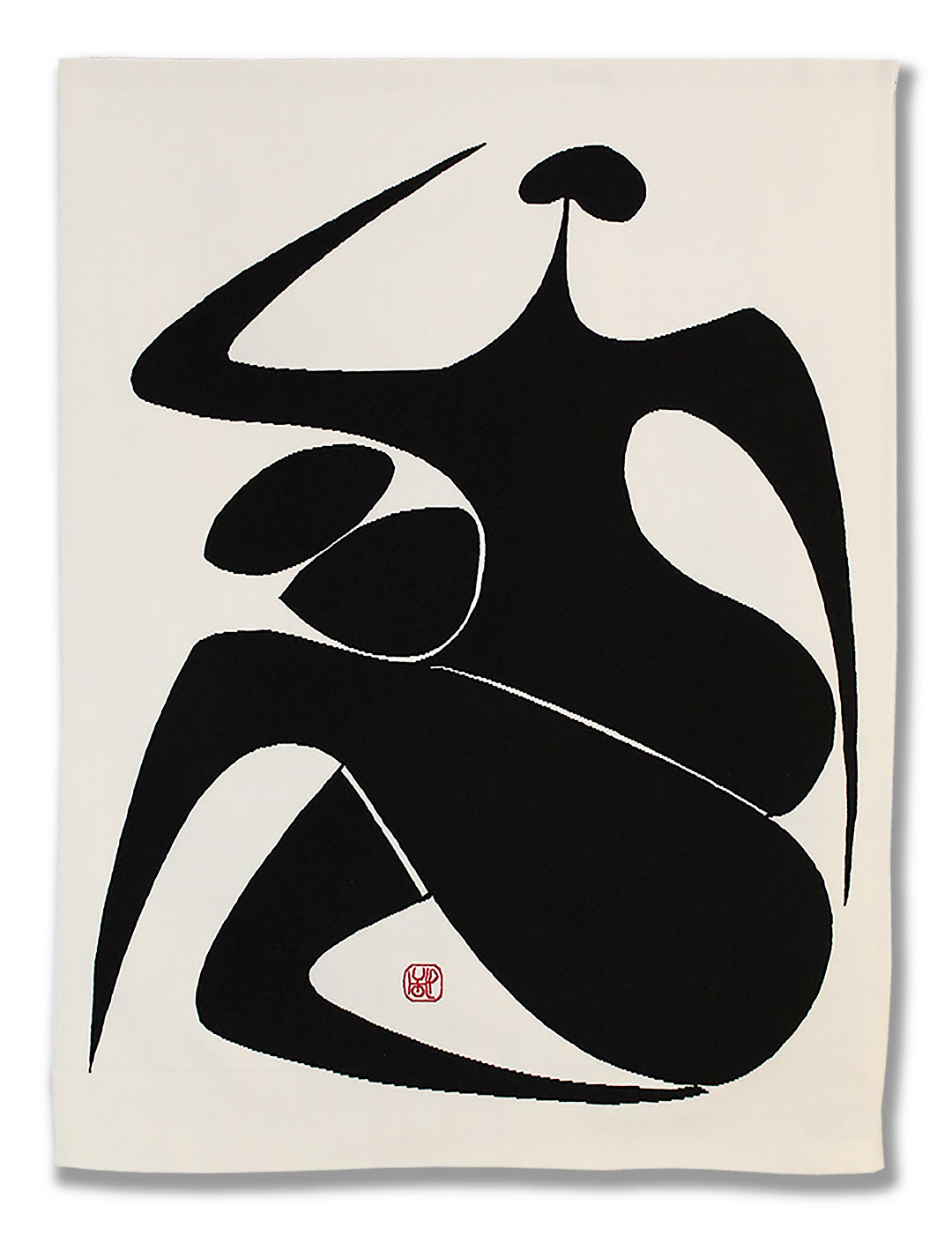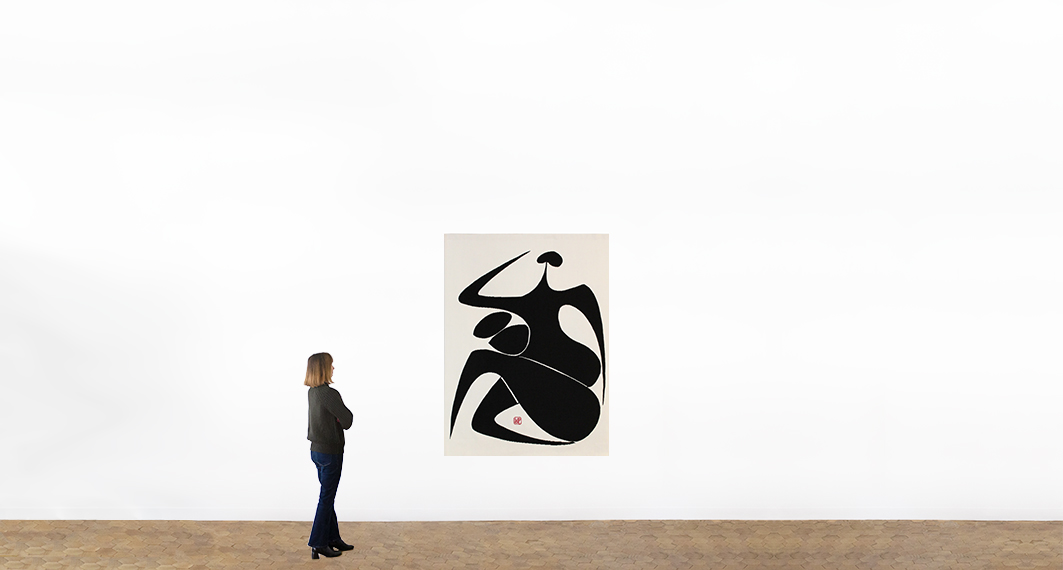La Sprinteuse
Tapestry after the work La Sprinteuse (1989) by Philippe Hiquily (1925- 2013)
France, Aubusson, Catherine Bernet workshop
Woven in wool and cotton (weft in wool and warp in cotton)
2024
Edition 1/2 EA, Edited by Galerie Chevalier
Monogram of the artiste woven on the center bottom
Bolduc
Philippe Hiquily, who was born in Paris in 1925 and died in Villejuif in 2013, is a figure of the second half of the 20th century in sculpture, and particularly in metal work, alongside his friend César Baldaccini, whom he met at the Beaux-Arts in Paris in 1947. It was moreover within the Academy and in Gimond Janniot's workshop that Philippe Hiquily discovered iron work, which he tamed year after year, giving rise to the bronze sculptures for which he is still famous today. From the Ecole des Beaux-Arts, he obtains the Sculpture Prize by presenting his work Neptune. Following this course where he learns the elementary techniques of modelling, Philippe Hiquily becomes interested in Greece, Prehistory and more particularly in archaeology, the codes of which he immerses himself in at the Musée de l'Homme. At the same time, he discovered the work of Julio Gonzalez at the Musée d'Art Moderne de la Ville de Paris, and in particular the technique of autogenous welding, on which he was to draw his inspiration to develop what he called Direct Metal. In 1954, he moved to rue Raymond Losserand, in a workshop that he occupied until 1988, and which allowed him to work freely, in accordance with his rejection of any system or movement.
Philippe Hiquily explores the possibilities of two main materials: rusted and acid-oxidised iron sheet metal and brass, always recovered. In 1959, Philippe Hiquily met the merchant René Rasmussen. This meeting marked a year of recognition for the artist, who, thanks to the support of his friend Isamu Nogushi, had the honour of presenting his works at the gallery The Contemporaries in New York. He won the Prix Critiques at the first Paris Biennial in 1962. Following these two events, the artist received several commissions from national museums. He was also solicited by many architects and urban planners for public building sites (in which 1% of the work is devoted to artistic works). From 1964 onwards, the artist inserts everyday objects into his sculptures (for example L'Horloge from 1962, or Parabella from 2008) . The "hiquilian creatures" created by the artist present stretched, insect-like forms, with a character of severe majesty, immobility or gravity, imbued with a "voluntary primitivism". Her female figures, whose ambiguity between sexuality and castration raises questions, are simplified, not stylised as the artist specified.

